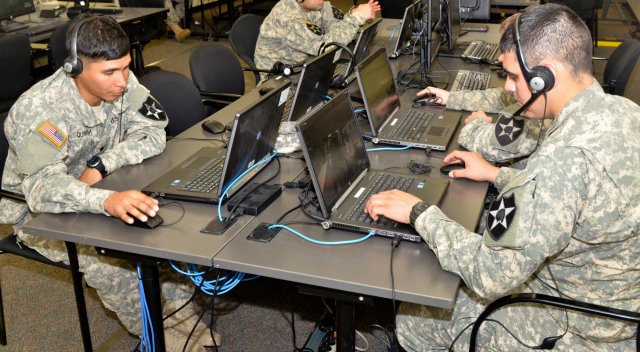
Virtual training environments are becoming more important as the naval services work around the limits of physical ranges and try to keep adversaries from snooping on new concepts and tactics, the Navy and Marine Corps’ top officers said Tuesday.
“We can’t have combat be the first place we’re trying out [tactics, training, and procedures] and new weapons,” Chief of Naval Operations Adm. Mike Gilday said during the 2021 Interservice/Industry Training, Simulation and Education Conference in Orlando, Florida, on Tuesday. The conference is hosted by the National Training & Simulation Association.
The Navy uses live-virtual-constructive training in several areas, including aviation education and wargames like the recent Large Scale Exercise 21. In that demonstration, the Navy used the technology to test out operational concepts without needing as many real ships, aircraft, or weapons, and it allowed participants to join in from simulators centers or aboard real ships.
One of the advantages of this virtual training is integrating and testing out tactics and new systems without adversaries watching, Marine Corps Commandant Gen. David Berger said during the panel with Gilday.
“In the Project Overmatch, in the larger [Joint All Domain Command and Control] kind of environment, we have to bake in ways to train that are resilient because we assume they’re going to go after our networks, and it’ll be in a denied and degraded environment without being seen. How do you allow your force to train, fight back through all that, without it being out in the open?” Berger said.
With this type of training becoming more necessary for the Navy and Marine Corps, it is also becoming more complex, and current physical training areas are insufficient. Training ranges are not as large as they once were due to encroachment from things like offshore wind farms, Gilday said. Because of that, the naval services will have to rely more and more on virtual training with fifth-generation aircraft and the coming next-generation carrier wing.
Now, Berger said, their virtual ranges need software to help set up virtual foes that fight more like Russia, Iran, or China.
“We have done that historically by you playing ‘red.’ But your 30 years of background— you can’t separate yourself from how you were trained and how you were brought up,” he said. “We need help creating a force-on-force construct that allows us to train against each other, free thinking, but replicating the adversary we want to plug into the model. We don’t have that yet. We need it.”
The commandant also said the Marines are interested in tracking the training and performance of a service member over time and space, as internet-connected stationary bikes allow their users to do.
“You can get on that Peloton bike this morning here in Orlando, plug in your profile if you live in Illinois, and continue your training. And your whole training for the past three years on Peloton bikes is there. Why can’t we do that for jet mechanics? Why can’t we do that for any occupation? If Peloton can do it and you can travel around the world and jump on a bike anywhere and your whole profile, your whole history is there, and it’s an incentive, a driver to do better, why can we not do that?” Berger asked.
___
© 2021 Government Executive Media Group LLC
Distributed by Tribune Content Agency, LLC.
0 comments :
Post a Comment